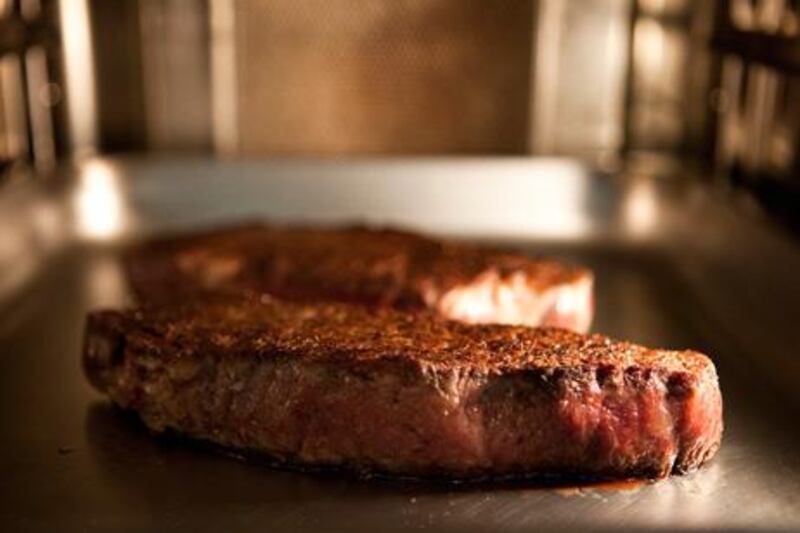In the culinary world, Japan-born Tetsuya Wakuda is regarded as something of a legend. He opened his restaurant, Tetsuya's, in Sydney in 1989 and, even today, anyone wishing to dine there must join a three-month waiting list.
Rather than being restricted by a single cuisine, Wakuda describes his style of cooking as "without a nationality". During a masterclass on Saturday morning - one of a series given by leading chefs throughout the Gourmet Abu Dhabi festival - he was keen to point out that recipes (even his), don't have to be followed to the letter: "I am more concerned with using fresh ingredients, of the highest quality and simply passing on their flavour in my dishes."
One ingredient that Wakuda talked about at length was Wagyu beef, a highly prized meat with a rich, buttery flavour and a melt-in-the-mouth texture. Originating around Kobe, in Japan, Wagyu cattle are now reared in the US, Australia and New Zealand.
Meat from Wagyu cattle is distinctive in that it contains a high percentage of inter-muscular fat, meaning that it is heavily marbled. Significantly, much of its flavour comes from this fat. The beef is graded on a scale of 1-12 and this is determined by the amount of marbling, the colour of the meat and its texture. Essentially, the higher the number, the better the quality.
As Wakuda explained, the high (unsaturated) fat content of the meat means that when you cook a piece of Wagyu, you need to handle it differently from a regular steak. Considering the price of this premium meat, if you are going to attempt to cook it at home then his tips are worth paying attention to.
Wagyu beef should not be served rare: heat needs to penetrate through all the marbling in order to obtain the maximum flavour. Instead serve it medium-rare or medium. Always store the Wagyu beef in the coldest part of the fridge, tightly wrapped in cling film to prevent it oxidising.
Don't bring the meat to room temperature. Put it straight into the pan from the fridge, as this will ensure that the fat renders gently. Trim any excess fat from the outside of the steak before cooking. Season the meat generously with sea salt and black pepper all over.
Cook on an induction stove if possible; this allows for a more even distribution of heat.
Pour a couple of tablespoons of rapeseed oil into a frying pan and place over a medium high heat (induction setting 8). When you can feel a strong heat coming off the pan (or you can see a light haze), reduce the heat slightly and carefully add the steak.
Press down on it gently to ensure even cooking. Cook for two minutes on each side. By now, the steak should be golden brown and caramelised on the outside. Don't be tempted to add butter - there is already flavour enough.
Remove the steak from the pan, place on a baking tray and transfer to an oven set at 60¿C. Leave for at least an hour. At this temperature, the meat will continue to cook gently and the fibres will relax - meaning that it will be as tender as possible when you come to serve it.
Wakuda went on to cook roast scampi seasoned with tea and scampi oil, a tasty, relatively simple dish that doesn't require any fancy equipment.






